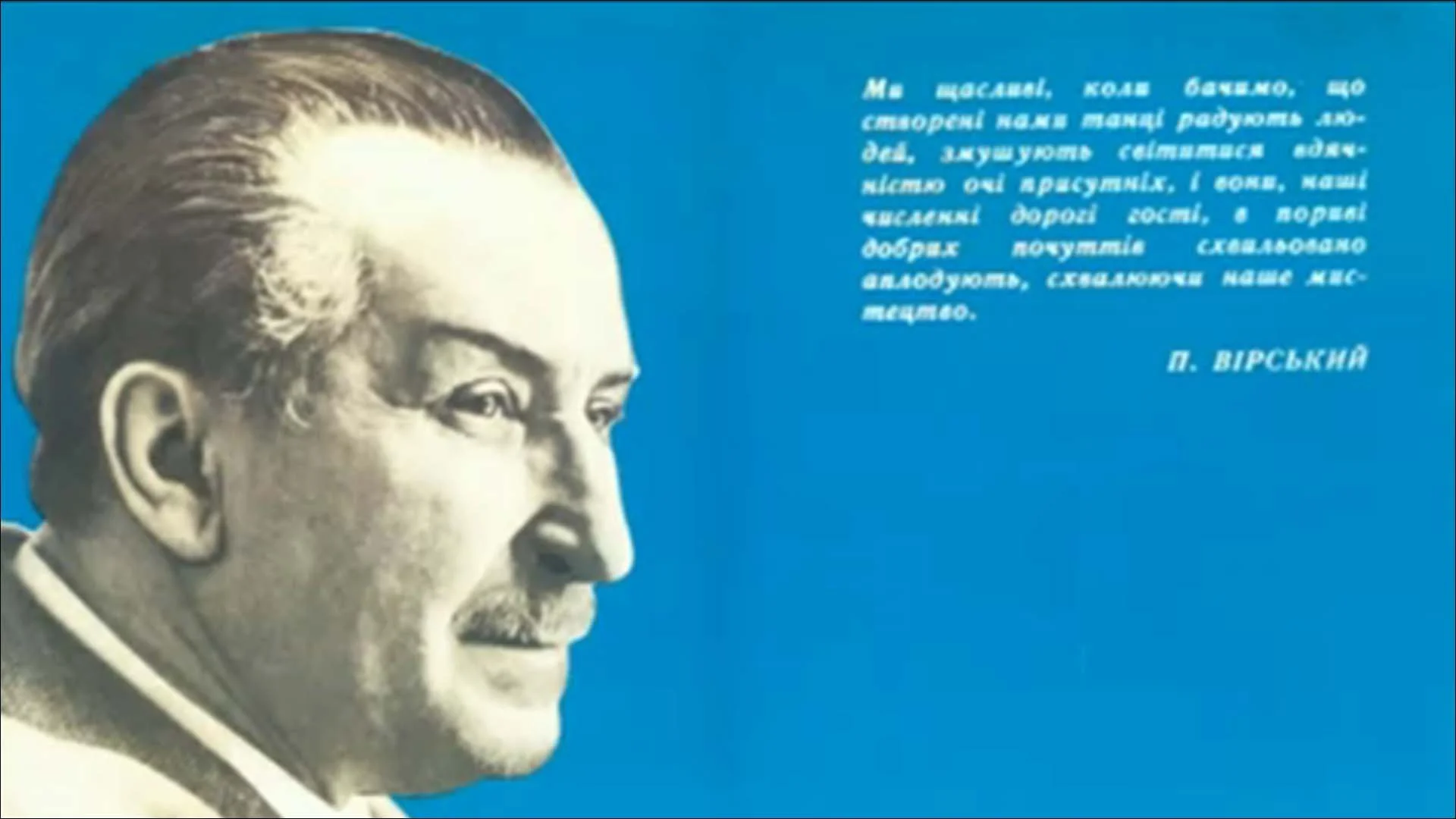Pavlo Virksy - The birth of dance
"Repeat and rehearse, but never repeat yourself ..." - Pavlo Virsky
Pavlo Virsky was born on February 25, 1905 in Odessa, Ukraine. In 1923 he started school at the Odessa Music & Drama college and after graduating, continued his studies at the Moscow Theater college. Even back then, dance – HIS dance - was already his life's purpose. That’s right, he made it his own, because it wasn’t a classic set of gestures and movements on stage accompanied by music, it was a mini play that was supposed to reveal the soul and heart of a human, of the people, a performance that was to be based on folk sources - in-depth, accumulated over centuries origins of the national character. In such a production every dancer had a role, an image, a character, and to uncover it the ‘actor’ was to accumulate all the best facets of their artistic skills and abilities. This was Virsky’s authorial artistic concept that he carried and developed throughout his life.
Taking this concept and joining forces with a famous choreographer Mykola Bolotov, in 1937 Virsky created a dance company, so from 1955 till 1975 Pavlo Virsky was the director of the ensemble, at that time known as, the Ukrainian Soviet Socialist Republic State Dance Ensemble. In 1977 this very company acquired a new name – the Pavlo Virsky State Honored Academic Dance Ensemble of Ukrainian SSR.
Virsky came into dance and ‘broke’ the traditions of folk stage dance, introducing the ‘Virsky aesthetics’. One can wonder what was special about his aesthetics. After all he wasn’t the one to invent the classic, modern, typical dance, moreover folk dance. It had been done long before him and many predecessors had worked with these sources. Many have also made violins, but few of them sound like Maestro Stradivari’s creations.
It was Virsky’s fantasy mind and choreographic talent combined that made it possible to unite seemingly incompatible choreographic trends and directions, introducing a new genre - folk theatrical/stage choreography. Another secret Virsky had was the way he trained his dancers - each of them became a part of him, his counterpart on stage, the embodiment of his philosophical and aesthetic principles and ideas.
Some people accused Virsky of destroying folklore, some, one the other hand, noted the ethnographic richness in the ensemble’s repertoire, but one aspect everyone agreed on - Virsky enriched folk dance with his ‘background’ - classical ballet. Folk dance acquired perfect lines and elegance becoming a refined work of art. Folk dance became professional.
Thousands of dancers from all around the then USSR came to audition for Virsky’s Ensemble. Virsky would carefully watch each and every one of them, looking for some specific traits of character. Guided by this principle, sometimes he would invite people who had nothing to do with dance to join the company. He would create unique inimitable images and characters. There are many legends and stories about these ‘castings’, one of the more popular ones is the following. Walking down the streets of Kyiv Virsky saw a trolley driver who perfectly fit the profile of a character he had envisioned for one of his new dances. So he rushed to stop the trolley, got into the driver’s cabin and begged him to start working in his company. The man’s refusal didn’t win over Virsky’s persistence. For days he basically stalked the driver until he finally agreed to come for tryouts. Story has it, this man then worked in the company for many years…





